How to measure for a multipoint lock
You have found a problem with your multipoint lock, now you need to find a replacement part.
This can be very challenging with so many types, makes, different operating methods, composite, UPVC, Timber doors. This list goes on!
We have done our best to break this down, this will help you on your journey to find a replacement mechanism! Putting your mind at ease and your house secure.
First things first! Let’s identify your locking operation. Don’t worry! Only five types to choose from.
5 types of locking operation
-
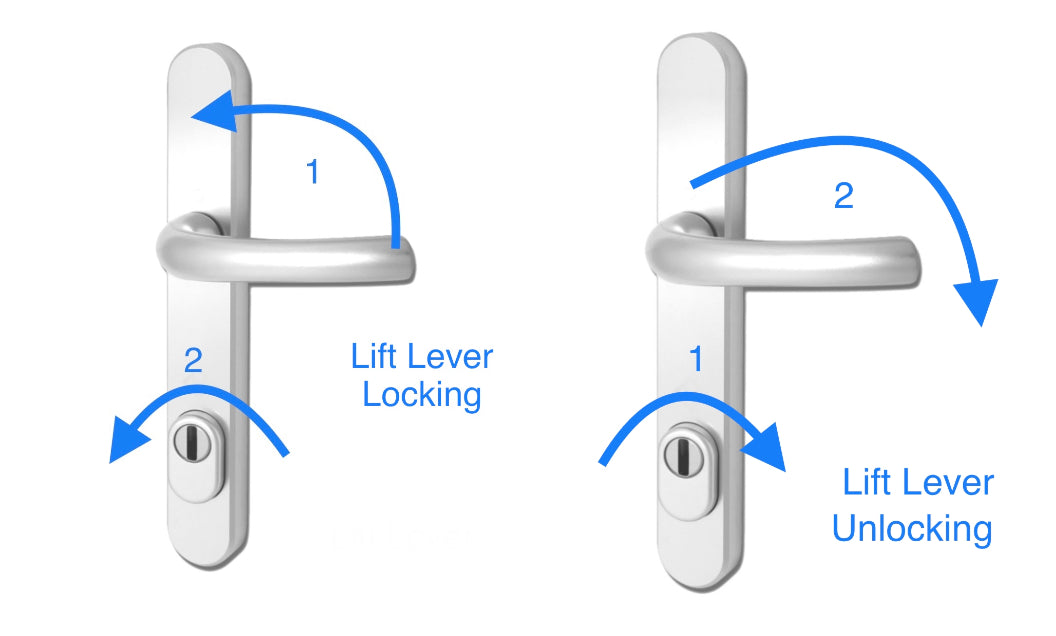
Lift Lever
once the door is closed the latch engages automatically. Then the handle is lifted to engage the locking points above and below handle, lastly the key is turned to lock door handle from operating. Unlocking is this in reverse.
-

Nightlatch Locking
Same as Lift Lever, except after unlocking from outside and retracting the locking mechanism by pulling handle down, the key must be used to retract the latch and gain entry.
-
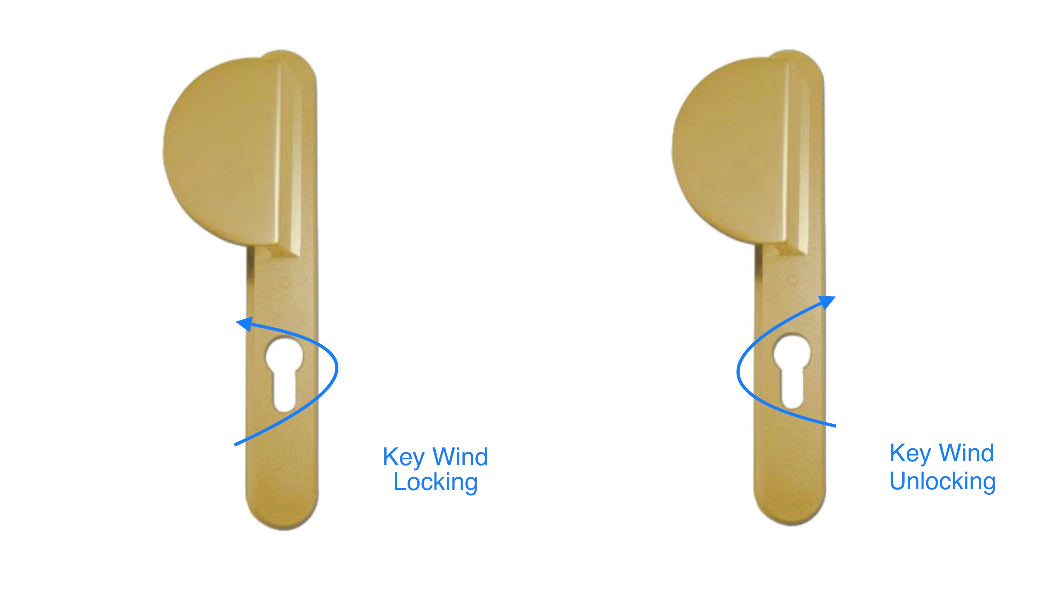
Key Wind
This mechanism will have fixed handles (ones that can’t be lifted) and require the key to be turned multiple time to engage/disengage the locking mechanism and latch.
-
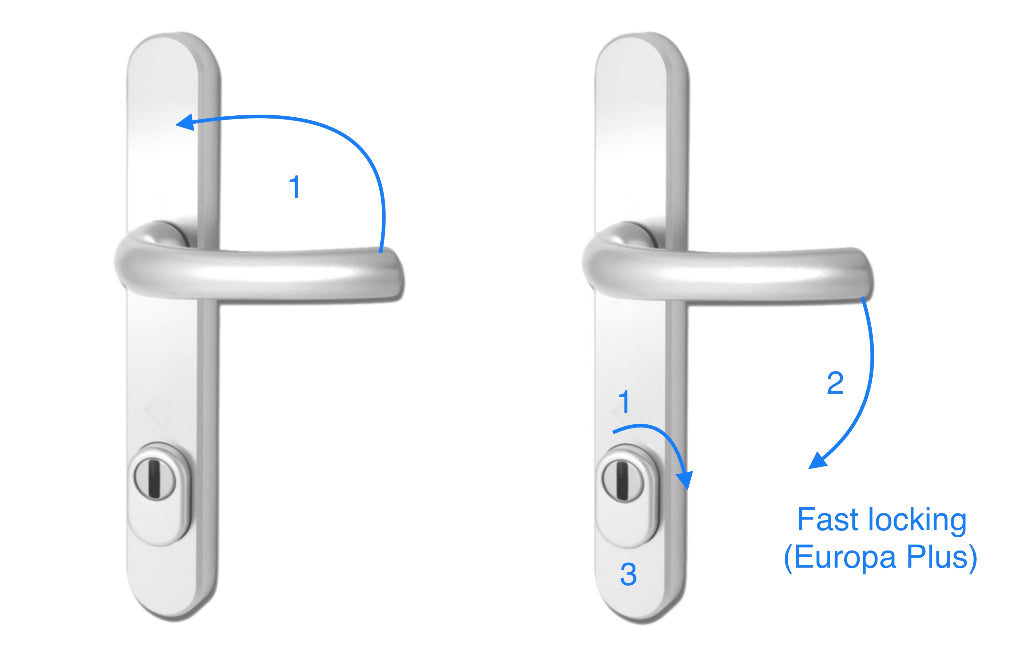
Fastlocking (Europa Plus)
After closing the door, all you need to lock the door is to lift the handle. To unlock you turn and hold the key, then pull handle down and lastly let go of the key to unlock the door.
-
Automatic locking
This is rare but starting to become popular. It is a electronic motorised lock that can be controlled from a smart door bell, intercom, keypad etc. Incredibly handy if you get a lot of deliveries!
Removing the components
-
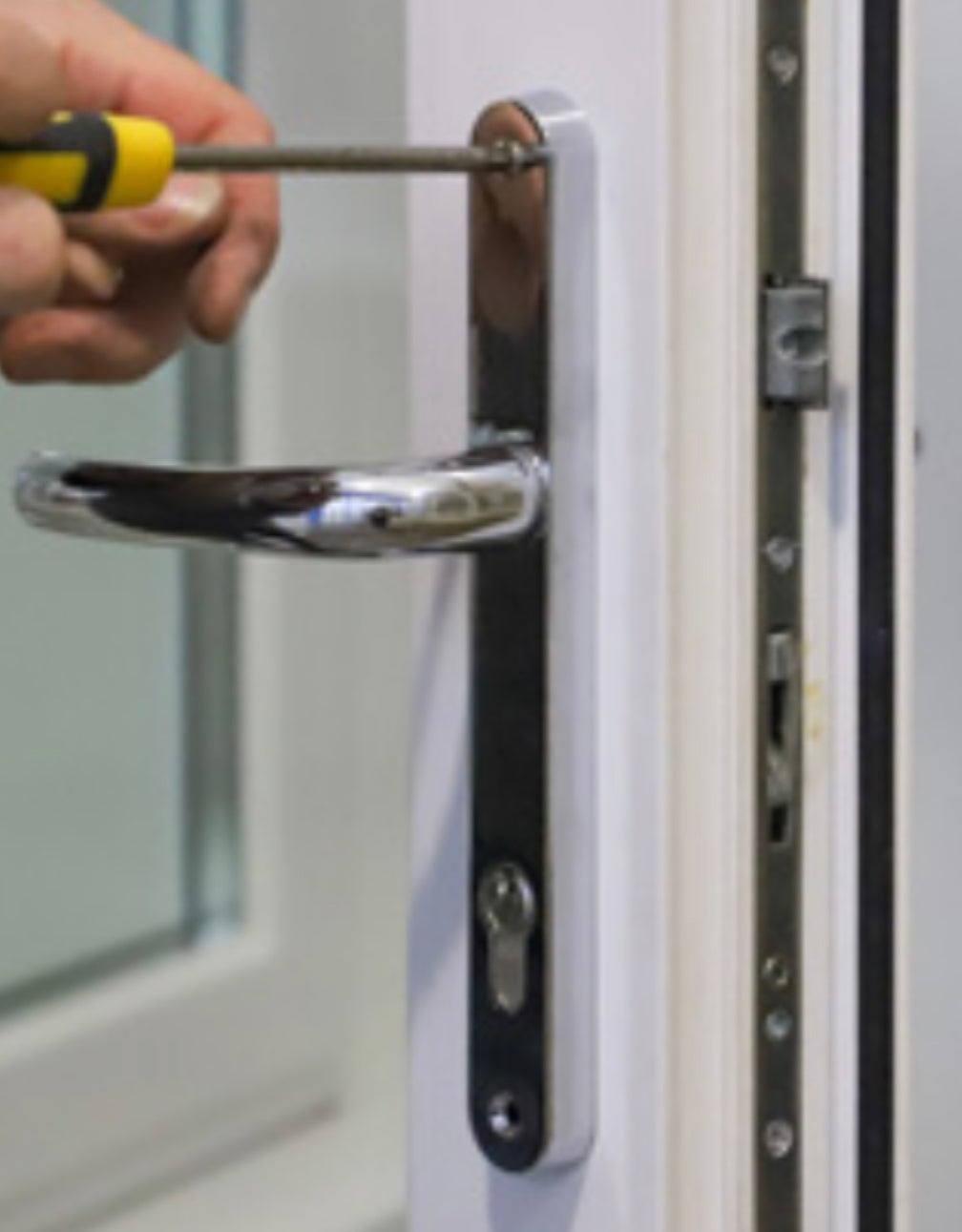
Step 1 - Remove Handles
On the inside of the door are two screws located to the top and bottom of the handle. Both of these will need to be removed. Once removed carefully pull on one of the handles while supporting the other.
NOTE: If the spindle (piece attaching handle to mechanism) comes out in two pieces please keep the correct side with the correct handle. This will help when fitting it all back together. -
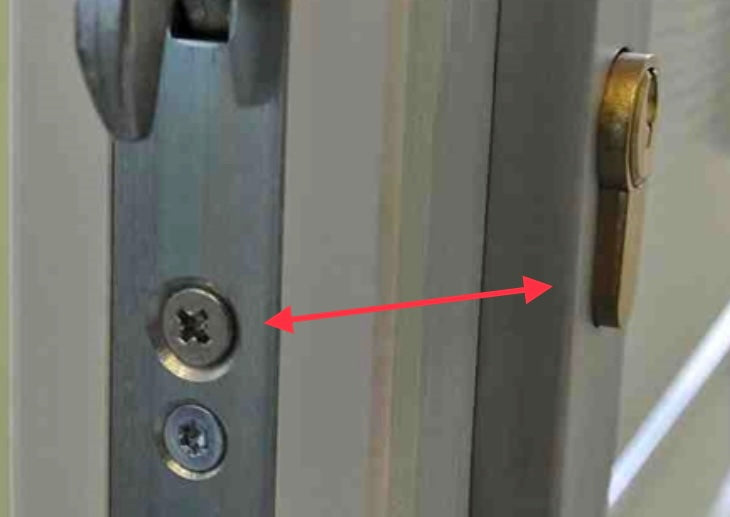
Step 2 - Remove Lock
To remove the lock you need to insert the key into the door remove the lock retaining screw (located inline with the bottom of the lock, see picture) and turn the key to either the 10 o’clock position or the 2 o’clock position then pull the lock till it is completely removed from door.
-
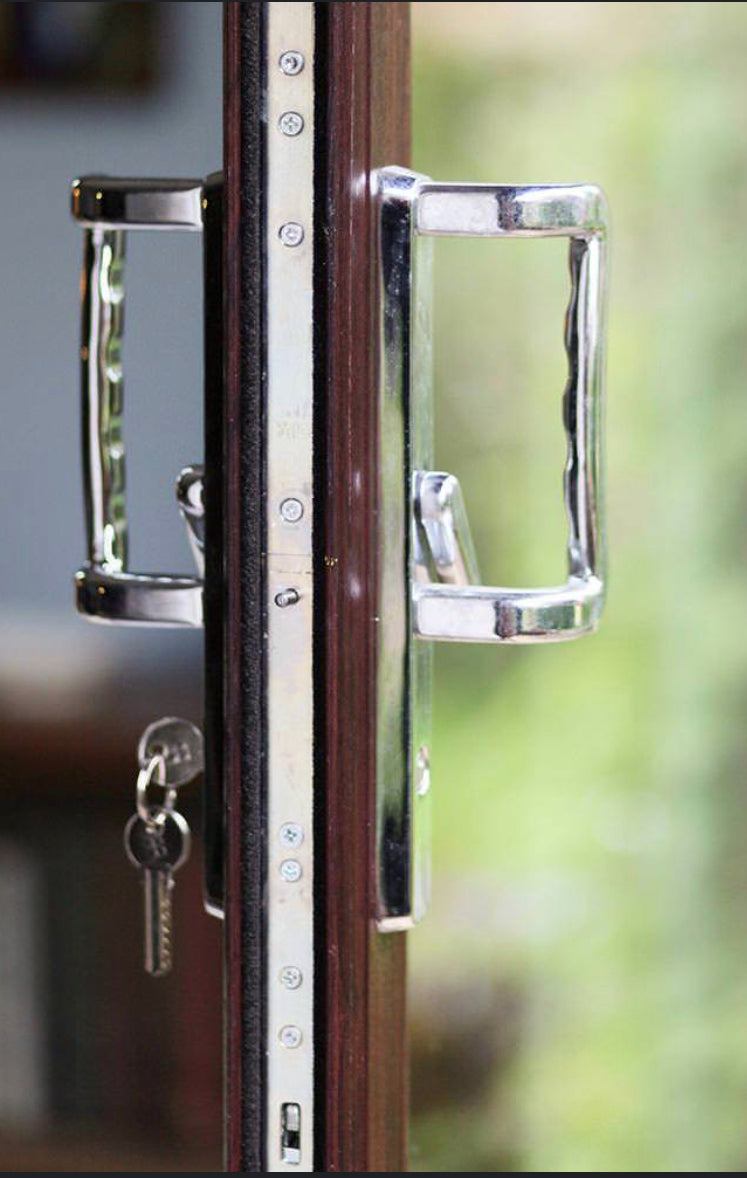
Step 3 - Remove screws along faceplate
With handles and lock removed it is now time to remove the mechanism. To do this you will need to locate the screws along the faceplate. Start from the bottom and work up till all screws are removed.
NOTE: the screws have a cross head and not a torx head. Turn each one you think is a screw half a turn to the left if it has become really loose then it’s most likely not a screw.
Measurements
-
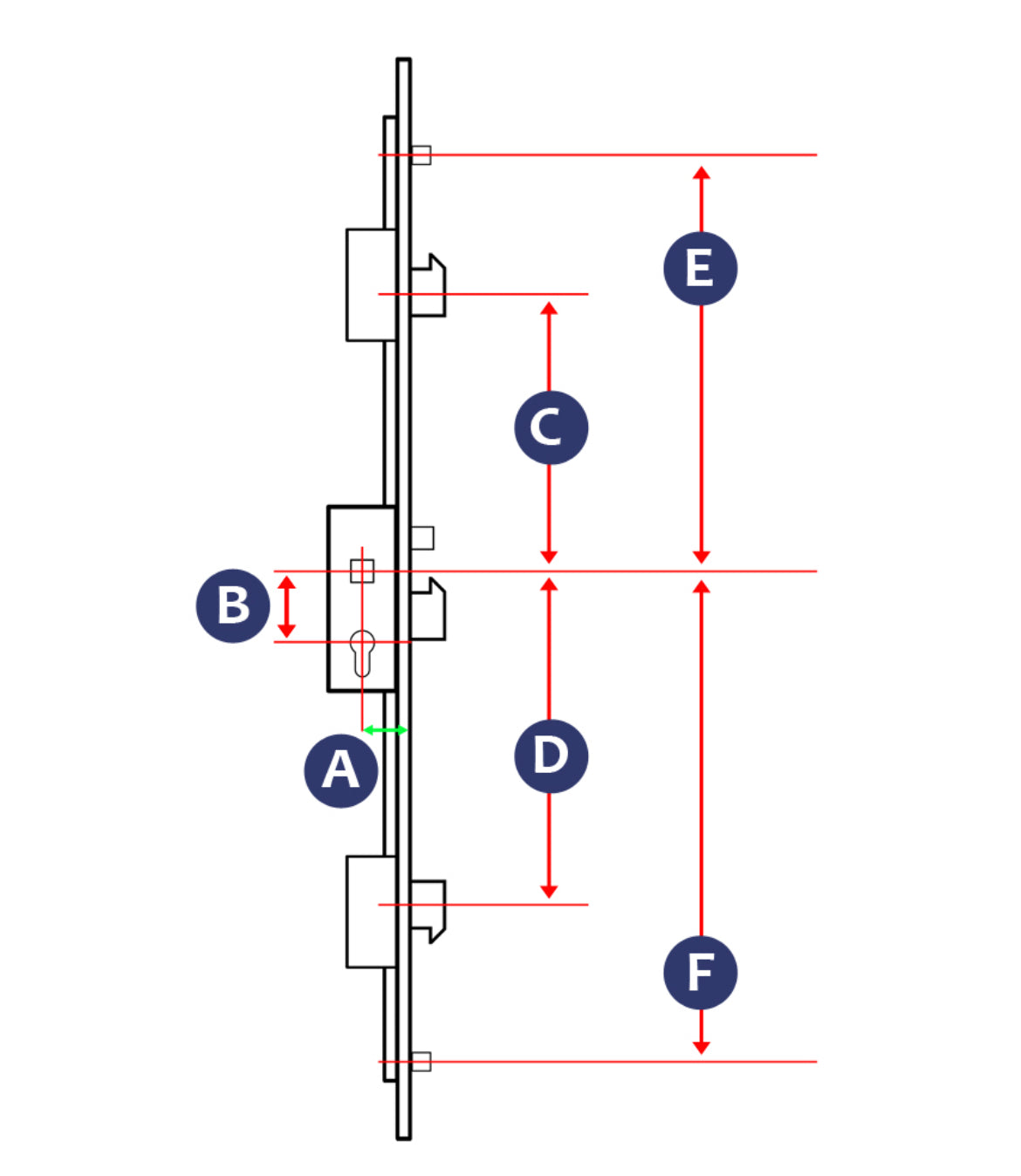
Step 4 - Now to take the measurements
With the mechanism removed, you need to make note of several measurements (A-H in picture)
-
A - Backset
Backset is measured from front of faceplate to centre of lock cut out.
-
B - Centre measurement
This measurement is taken from centre of spindle hole to top centre of lock cut out (if you have a euro profile cylinder, then to the centre of the wider circle)
Most common is 92mm
-
C & D - Distance between spindle and top and bottom lock
Take a measurement from the spindle to the centre of the top locking mechanism and repeat for the bottom mechanism.
-
E & F - Mushroom or roller measurements
Next note a measurement from the spindle to the top roller or mushroom. Repeat for the bottom roller/mushroom.
-
G - Width of faceplate
Measure the width of the faceplate (the part that sticks out the side of the door when mechanism fitted in door)
-
H - Overall height
Overall height of the mechanism (furthest point to furthest point)
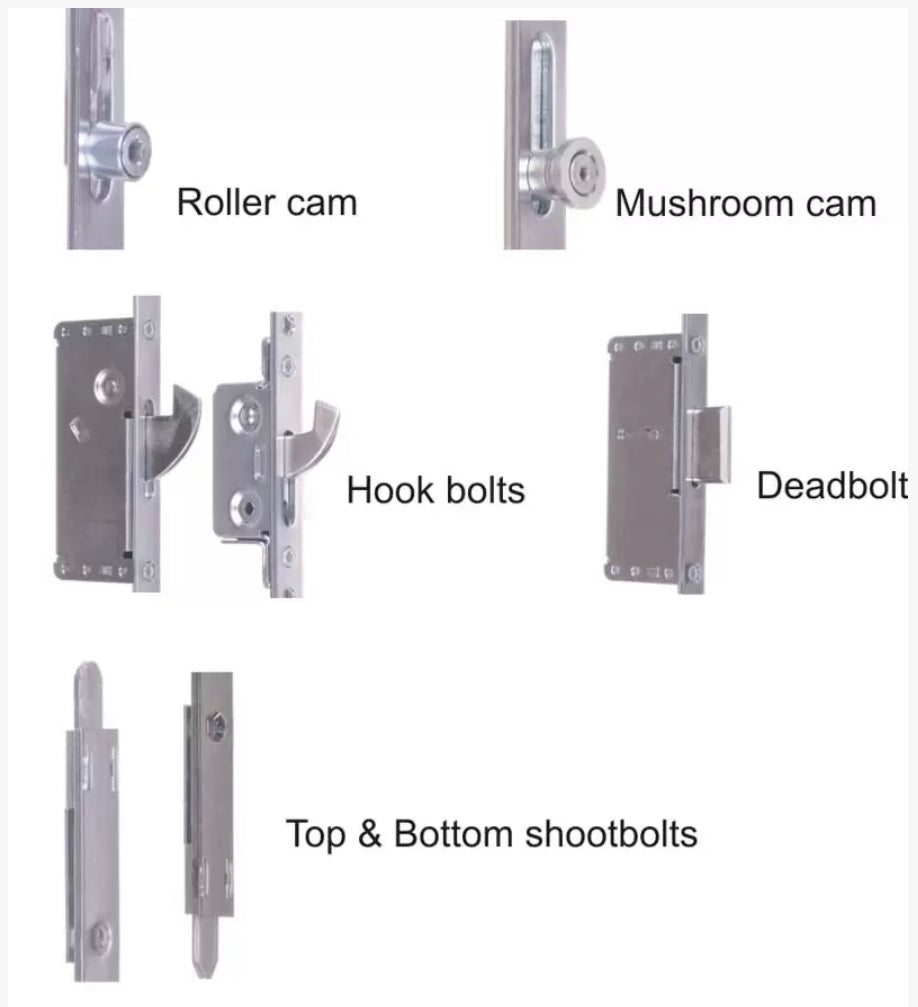
Now to identify the locking type
A combination of the above is usually used. Either cams are combined with the bolts.
most common is a roller cam with either a hook bolt or dead bolt.
top and bottom shoot bolts are commonly found on French doors (double doors)
Time to find a lock
Congratulations, you are now armed with all the information you need. Please use the button below to find your replacement lock.







